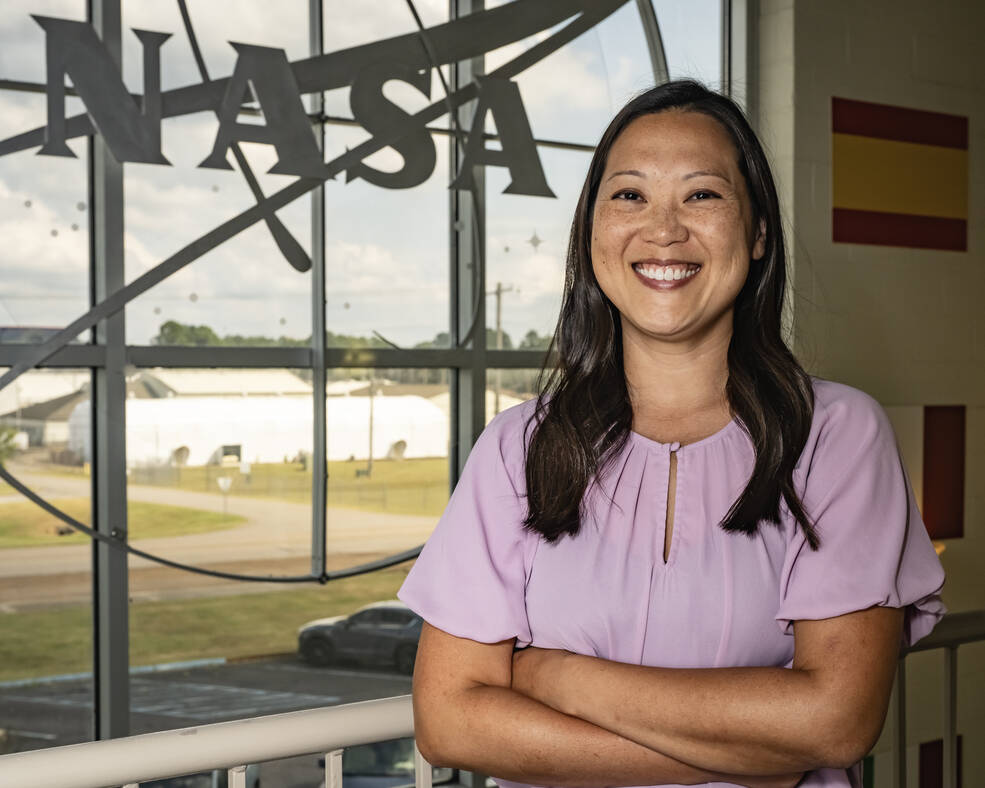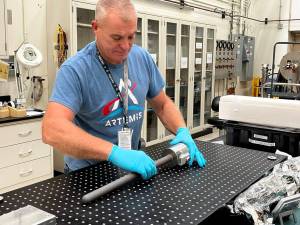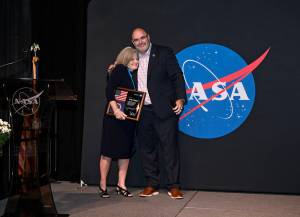
4 min read
Eleasa Kim: Supporting NASA’s Commercial Low-Earth Orbit Development Program

For Eleasa Kim, being part of NASA’s Commercial Low-Earth Orbit Development Program, also known as CLDP, is the perfect combination of working with technology and helping people.
As the payload project integrator for CLDP supporting NASA Marshall Space Flight Center’s Human Exploration Development and Operations Division, Kim supports NASA and commercial entities that want to be part of the agency’s burgeoning commercial low Earth orbit economy.
As NASA works to transition science operations from the International Space Station to commercial space stations, Kim is working to ensure a smooth transition for the science being conducted in microgravity for the benefit of humanity.
“What inspires me every day is being trusted by CLDP and Marshall to represent payloads operations in these critical stages of commercial space station development,” Kim said. “I get a front row seat as I offer my expertise and passion to help further this mission in making the spaceflight team operating in low Earth orbit even bigger and more sustainable with commercial partnerships.”
Kim’s path to NASA began with an aptitude test taken at her high school in Opelika, Alabama, that revealed she would do well working in public service. She also enjoyed anatomy and biology classes and had an interest in technology. During her sophomore year, a teacher suggested she would make a great engineer. Stem cell research was beginning to make headlines, and she decided to pursue her bachelor’s degree in biomedical engineering at Vanderbilt University.
She also earned a master’s degree in biotech research from Northwestern University. When evaluating the next step in her journey, she evaluated Ph. D. programs and industry jobs.
“I love people, technology, and teams – working on a team and having a shared goal,” Kim said. “And I like results.”
In 2007, Kim landed a job on a NASA contract at Johnson Space Center, working for Wyle Laboratories as a biomedical engineer flight controller in Mission Control supporting the hardware for astronauts in space.
“Until then, NASA had not been on my radar at all, but I thought, ‘Wow, that’s a cool opportunity,’ and it aligned with those things that are most fulfilling to me,” she said.
Kim supported the operations for crew health and medical equipment on the space station. This included medications, exercise hardware, and environmental sampling equipment. For Space Shuttle mission STS-119 and Increments 27 and 28, she managed the full mission complement of activities and hardware resupply and return. She also trained new biomedical engineer flight controllers.
“It was very hard, but I love challenges and working hard,” Kim said. “And I like working on a team. And that’s exactly what it was. It had the hardware side of things – the building and fixing of things, because the space station was being assembled and hardware rarely works exactly how you think it will in microgravity. And it also had the human aspect of supporting crew health.”
Kim joined the Marshall team in 2014 and has worked as a science payload planner for station and worked a short time on the safety team supporting payloads for the Artemis I mission. She also did systems integration for the Microgravity and Life Science Glovebox teams. After working on various support contracts for about 15 years, she was hired by NASA as a civil servant in 2020. During the first few years as a civil servant, Kim provided technical leadership for the mission planning branch of the Payload and Mission Operations Division at Marshall. While in this role, one of the part-time tasks she fulfilled was providing subject matter expert support for CLDP. In spring of this year, that part-time role became a full-time position.
Kim said she is looking forward to seeing the commercial low Earth orbit economy develop in the years to come. NASA is working with commercial teams to develop commercial space stations and the services that will be needed to support them.
“When the space station retires, the plan is for us to continue to fly and get our astronauts experience in microgravity and low-Earth orbit as well as execute science in microgravity and low-Earth orbit,” she said. “We want to be one of many users of commercial space stations.
“What I’m most excited for now is that NASA is leveling up by supporting the creation of commercial space stations and destinations. I have a lot of passion for our mission – me in this role is where I’m meant to be right now.”














